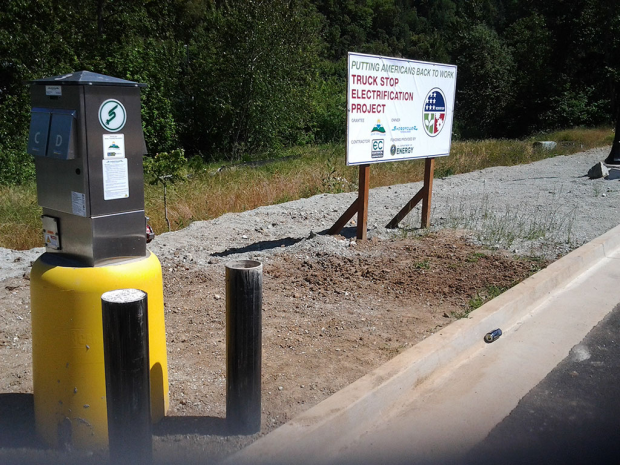Road Trip Thinking
Posted Tuesday, June 26, 2012.
Last week I delivered my daughter to San Francisco by car. Roughly 800 miles each way. Erin landed a summer internship there. The hours on the road got me to thinking. Again.

The Honda Pilot that we took averaged about 20 miles per gallon on the trip. The tank holds 20 gallons. We stopped about every 360 miles to fill the tank. The reckoning for the gas added to about $154.00 each way. Pretty standard stuff.On the Oregon leg, we noticed signs pointing to “EV charging stations” every so often. EV being electric vehicles of course. We stopped at the one in Canyonville, Oregon. A huge parking lot. Lots of charging stations. Not one in use. The same situation on the return trip. Why no activity?
Maybe the infrastructure is way out ahead of the technology. After all, EV car batteries hold little power and have to be recharged for long periods of time every 100 miles or so. So an 11 hour gas engine drive to San Fran would take 11 hours + 8 charges x 8 hours/charge = 75 hours each way. Not very practical. And as a friend once told me, nobody likes to sit in a wicker-basket car seat for the privilege of saving the earth.
Bottom line is that gasoline fuel packs an astounding amount of energy into a gallon. Roughly 114,000 BTU or 33.4 kW-hours. Existing batteries are far weaker. The entire Nissan Leaf battery, for example, holds just 24 kW-hours of energy. I don’t care how efficient you make the car, you are not going to travel very far on 2/3 gallon of gasoline equivalent.
So what to do? Innovate! If an EV car can’t hold much energy, one could design it to have very quick recharging turnaround. Some proposals to build battery-swapping stations are out there. That seems clunky to me. But it might work. Not to restate the obvious, but the industry needs to invent a battery having far higher energy density.
A gamechanger might be to figure out how to power EV cars while they are on the road. Solar cells are weak and impractical. Some other sort of infrastructure, expensive I’m sure, will be necessary to do something like this.I am afraid that the $130 million spent on the West Coast Electric Highway (http://www.oregon.gov/ODOT/HWY/OIPP/inn_ev-charging.shtml) might have been a big waste of resources. EV cars may make some sense in-city for commuting, but highway trips are really impractical.
I’d put my money instead on cleaner fossil fuels. 4 gallons of compressed natural gas, for example, are equivalent to 1 gallon of gasoline. Engineering the increased fuel volume for CNG cars would be much easier in the short run than hoping, praying, for an unexpected EV breakthrough. Just my 2 cents worth.
